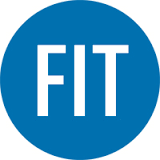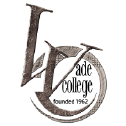What do they do?
Design clothing and accessories. Create original designs or adapt fashion trends.
Also known as:
Apparel Fashion Designer, Clothing Designer, Costume Designer, Dance Costume Designer, Designer, Fashion Designer, Historic Clothing and Costume Maker, Latex Fashions Designer, Product Developer, Shoe Designer, Sweater Designer
-
0%
Change
Ranks #30 in job growth rate40Job Openings
Ranks #13 in net job growth
Looking for colleges that offer a specific major? Use the College Match Tool to find your best-matched schools and discover your estimated Net Price!
- Bachelor's degree (56%)
- Some college, no degree (12%)
- Associate's degree (11%)
- Master's degree (10%)
- High school diploma equivalent (8%)
- Doctorate or Professional Degree (2%)
- Less than high school diploma (2%)
Most Popular Majors that prepare Fashion Designers
-
#1
-
Degrees Granted
834
-
Female Students
673
-
Male Students
161
-
Median Starting Salary
$45,300
-
-
#2
-
Degrees Granted
81
-
Female Students
69
-
Male Students
12
-
Median Starting Salary
$35,825
-
-
#3
-
Degrees Granted
15
-
Female Students
13
-
Male Students
2
-
Median Starting Salary
$35,825
-
-
#4
-
Degrees Granted
6
-
Female Students
5
-
Male Students
1
-
Median Starting Salary
$37,200
-
People in this career often have these skills:
- Active Listening - Giving full attention to what other people are saying, taking time to understand the points being made, asking questions as appropriate, and not interrupting at inappropriate times.
- Critical Thinking - Using logic and reasoning to identify the strengths and weaknesses of alternative solutions, conclusions, or approaches to problems.
- Speaking - Talking to others to convey information effectively.
- Active Learning - Understanding the implications of new information for both current and future problem-solving and decision-making.
- Social Perceptiveness - Being aware of others' reactions and understanding why they react as they do.
- Coordination - Adjusting actions in relation to others' actions.
- Judgment and Decision Making - Considering the relative costs and benefits of potential actions to choose the most appropriate one.
- Reading Comprehension - Understanding written sentences and paragraphs in work-related documents.
- Complex Problem Solving - Identifying complex problems and reviewing related information to develop and evaluate options and implement solutions.
- Time Management - Managing one's own time and the time of others.
- Management of Personnel Resources - Motivating, developing, and directing people as they work, identifying the best people for the job.
- Monitoring - Monitoring/Assessing performance of yourself, other individuals, or organizations to make improvements or take corrective action.
- Persuasion - Persuading others to change their minds or behavior.
- Negotiation - Bringing others together and trying to reconcile differences.
- Service Orientation - Actively looking for ways to help people.
- Writing - Communicating effectively in writing as appropriate for the needs of the audience.
- Instructing - Teaching others how to do something.
- Operations Analysis - Analyzing needs and product requirements to create a design.
People in this career often have talent in:
- Oral Expression - The ability to communicate information and ideas in speaking so others will understand.
- Oral Comprehension - The ability to listen to and understand information and ideas presented through spoken words and sentences.
- Originality - The ability to come up with unusual or clever ideas about a given topic or situation, or to develop creative ways to solve a problem.
- Written Comprehension - The ability to read and understand information and ideas presented in writing.
- Fluency of Ideas - The ability to come up with a number of ideas about a topic (the number of ideas is important, not their quality, correctness, or creativity).
- Deductive Reasoning - The ability to apply general rules to specific problems to produce answers that make sense.
- Inductive Reasoning - The ability to combine pieces of information to form general rules or conclusions (includes finding a relationship among seemingly unrelated events).
- Problem Sensitivity - The ability to tell when something is wrong or is likely to go wrong. It does not involve solving the problem, only recognizing that there is a problem.
- Written Expression - The ability to communicate information and ideas in writing so others will understand.
- Visualization - The ability to imagine how something will look after it is moved around or when its parts are moved or rearranged.
- Near Vision - The ability to see details at close range (within a few feet of the observer).
- Speech Recognition - The ability to identify and understand the speech of another person.
- Speech Clarity - The ability to speak clearly so others can understand you.
- Category Flexibility - The ability to generate or use different sets of rules for combining or grouping things in different ways.
- Visual Color Discrimination - The ability to match or detect differences between colors, including shades of color and brightness.
- Information Ordering - The ability to arrange things or actions in a certain order or pattern according to a specific rule or set of rules (e.g., patterns of numbers, letters, words, pictures, mathematical operations).
People in this career often do these activities:
- Coordinate design activities.
- Develop artistic or design concepts for decoration, exhibition, or commercial purposes.
- Draw detailed or technical illustrations.
- Write informational material.
- Collaborate with others to develop or refine designs.
- Conduct market research.
- Monitor current trends.
- Select materials or props.
- Promote products, activities, or organizations.
- Build models, patterns, or templates.
- Maintain inventories of materials, equipment, or products.
- Study scripts to determine project requirements.
- Conduct research to inform art, designs, or other work.
This page includes data from:

 Occupation statistics: USDOL U.S. Bureau of Labor Statistics Occupational Employment Statistics
Occupation statistics: USDOL U.S. Bureau of Labor Statistics Occupational Employment Statistics
 Videos: CareerOneStop, USDOL/ETA and the Minnesota Department of Employment & Economic Development
Videos: CareerOneStop, USDOL/ETA and the Minnesota Department of Employment & Economic Development











